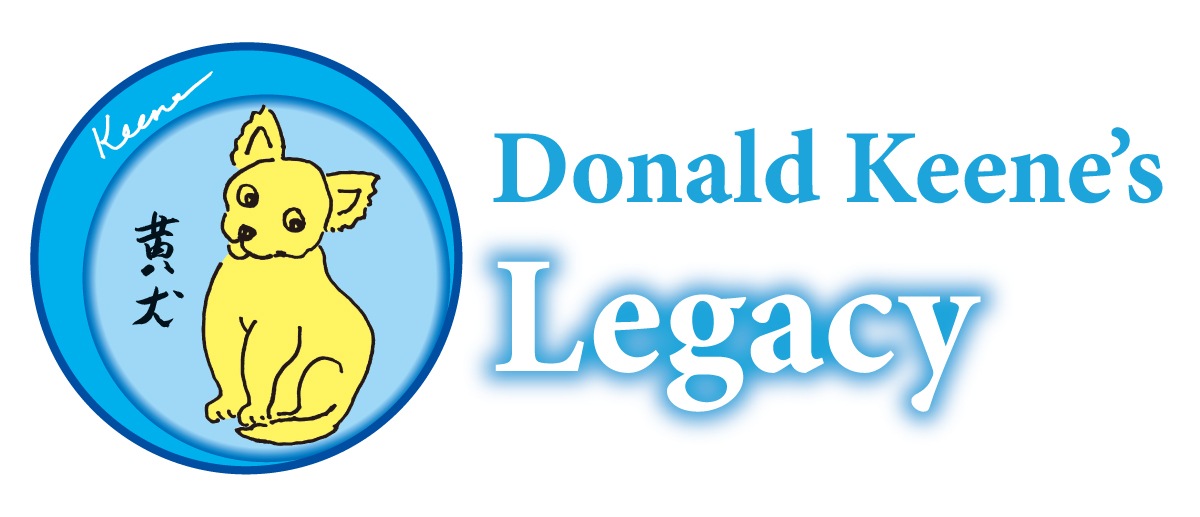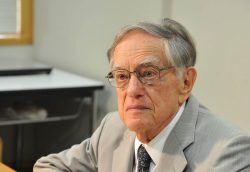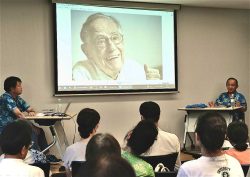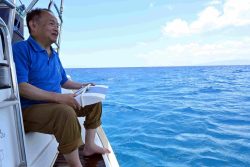Donald Keene Remembered in Museum Exhibition, Piano Concert; Fond Sentiment Lingers in Kita Ward, His Longtime Home
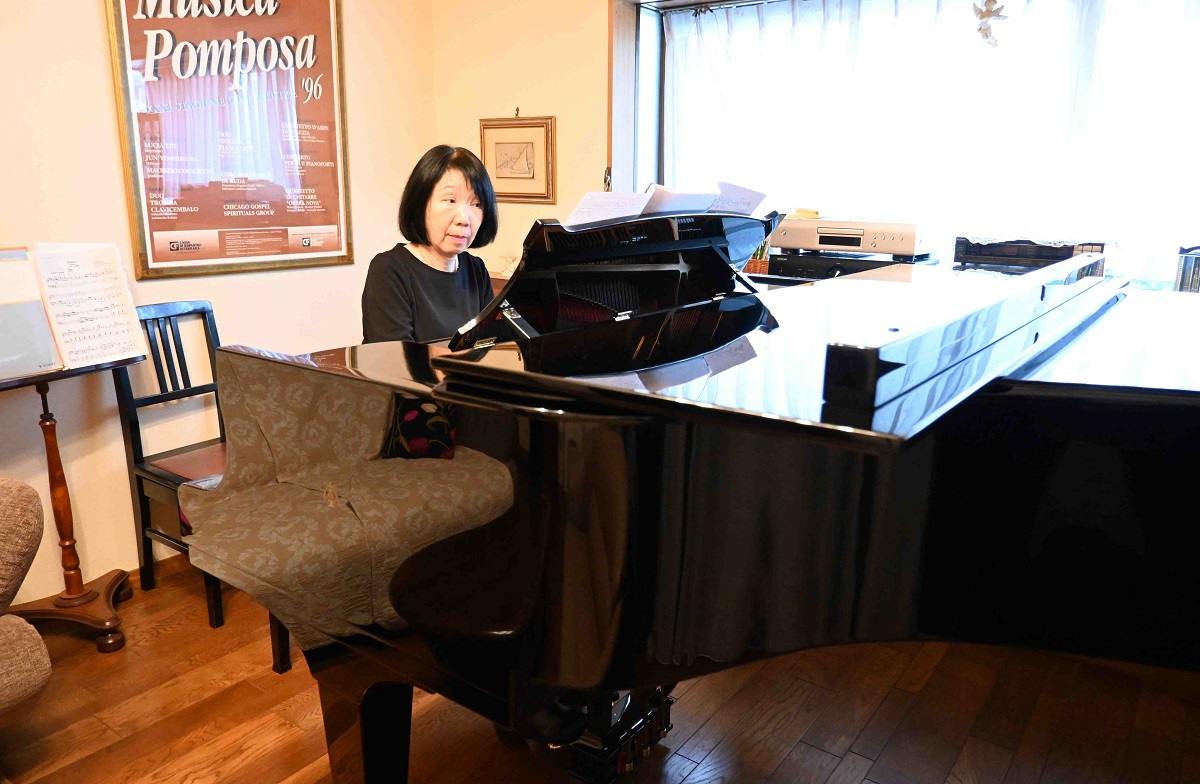
Yukiko Nishimura plays the piano at her home in Kita Ward, Tokyo, on Feb. 6.
16:33 JST, February 14, 2024
A concert titled “The Pianist Who Touched Donald Keene’s Heart” by Yukiko Nishimura, who was a friend of the literary scholar, will be held in Kita Ward, Tokyo, on Feb. 24.
The day marks the fifth anniversary of the death of Donald Keene, who introduced much Japanese literature to the world.
Meanwhile, the exhibition “Get to Know More about Donald Keene!” has already opened at the Asukayama Museum in the ward. Keene lived in Kita Ward for about 45 years until he passed away in 2019, and the ward continues to hold events commemorating his achievements and personality in Japan.
“When I finished my performance, Keene-san always expressed his joy and emotion, shouting, ‘Bravo!’ He was so happy that the rest of the audience was surprised,” Nishimura said in an interview at her home, where she was practicing the piano for the concert.
Keene was a great lover of music, with opera at the top of the list. He looked forward to the chamber concerts Nishimura gave twice a year, in spring and fall, at the Western-style house in the Kyu-Furukawa Gardens in Kita Ward, and attended them without fail for about 25 years, until late in his life.
Nishimura, who studied music in Italy, recalled: “In Italy, people applaud when a performance is good, even between movements, and the performers appreciate it. Since I played in such circumstances, I was very happy with the way Keene-san appreciated my performance.”
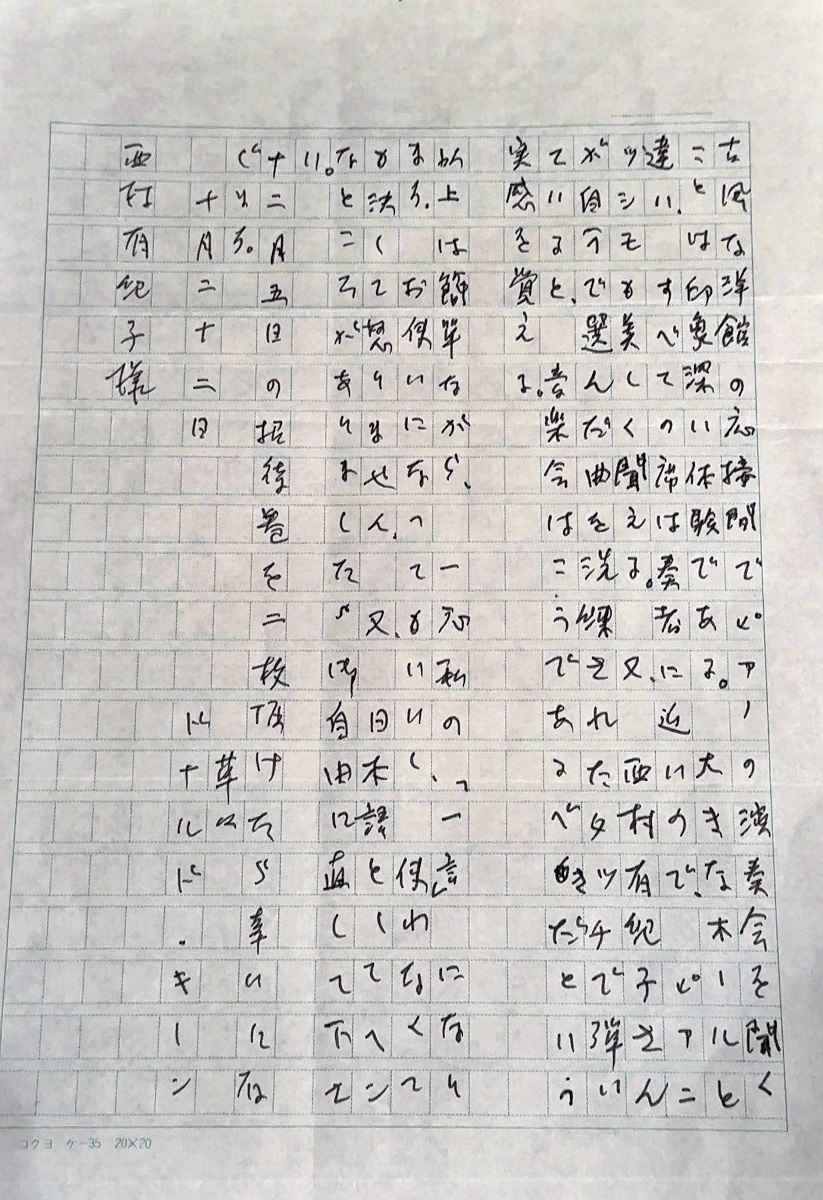
One of Donald Keene’s letters to Yukiko Nishimura
Nishimura, who also lives in the ward, says that she often bumped into Keene on a shopping street and got into conversations about opera, and that she often saw Keene, who wrote letters to various people almost every day, going in and out of the post office. Nishimura also received many letters and postcards from him. “He always put a commemorative stamp on them. I was very happy to receive such thoughtfulness.” Nishimura showed me one of the letters she had received from Keene. The letter contained words that Keene had written in the form of a review. Part of that section reads, “Unlike large halls, all the seats are close to the performer, so the pianissimo can be heard beautifully.”
The concert will be held at the Takinogawa Kaikan hall in Nishigahara, Kita Ward, starting at 2 p.m. on Feb. 24. Nishimura will bring her beloved Steinway grand piano and perform Schubert’s Impromptu Opus 90 No. 3 and other pieces associated with her memories of Keene, along with commentary.
Tickets are ¥2,000. To reserve seats, visit the website of the Donald Keene Memorial Foundation ( https://www.donaldkeene.org/ ), the organizer of the concert.
Tracing ‘Narrow Road to Oku’
The Asukayama Museum exhibition, organized by Kita Ward, introduces the young Keene of the 1950s. It is a two-part exhibition, with the first part “Young Scholar Donald Keene Travels Along ‘The Narrow Road to Oku'” now underway and running through March 10. It focuses on The Narrow Road to Oku by the poet Matsuo Basho (1644-94), which Keene translated into English, and on Keene’s view of literature and his relationship to Japanese society.

An issue of Chuo Koron magazine from June 1955 in which “A Westerner’s view The Narrow Road to Oku” was carried.
Keene first encountered this piece in 1946 in a class taught by Prof. Ryusaku Tsunoda at Columbia University in New York. Keene moved to Kyoto in 1953, and in April 1955 he made a trip to see the places that Basho visited in the Tohoku region. Using trains and buses, Keene visited the ruins of Tagajo Castle, saw the island views at Matsushima, walked the grounds of Chusonji Temple, and experienced other places before returning to Kyoto. Keene, who had already written a series of articles in Japanese for Chuo Koron magazine, then wrote “A Westerner’s view The Narrow Road to Oku” based on the trip for the June 1955 issue. It received a great response.
At the exhibition venue, panels depicting Keene’s travels are shown along with photographs from that time. Issues of Chuo Koron magazines of that period, for which he wrote a series of articles, are also on display.
Reflecting on his travel in later years, Keene wrote: “Neither the green grass nor the trees are necessarily the grass and trees of the past. What remains most is the human language.”
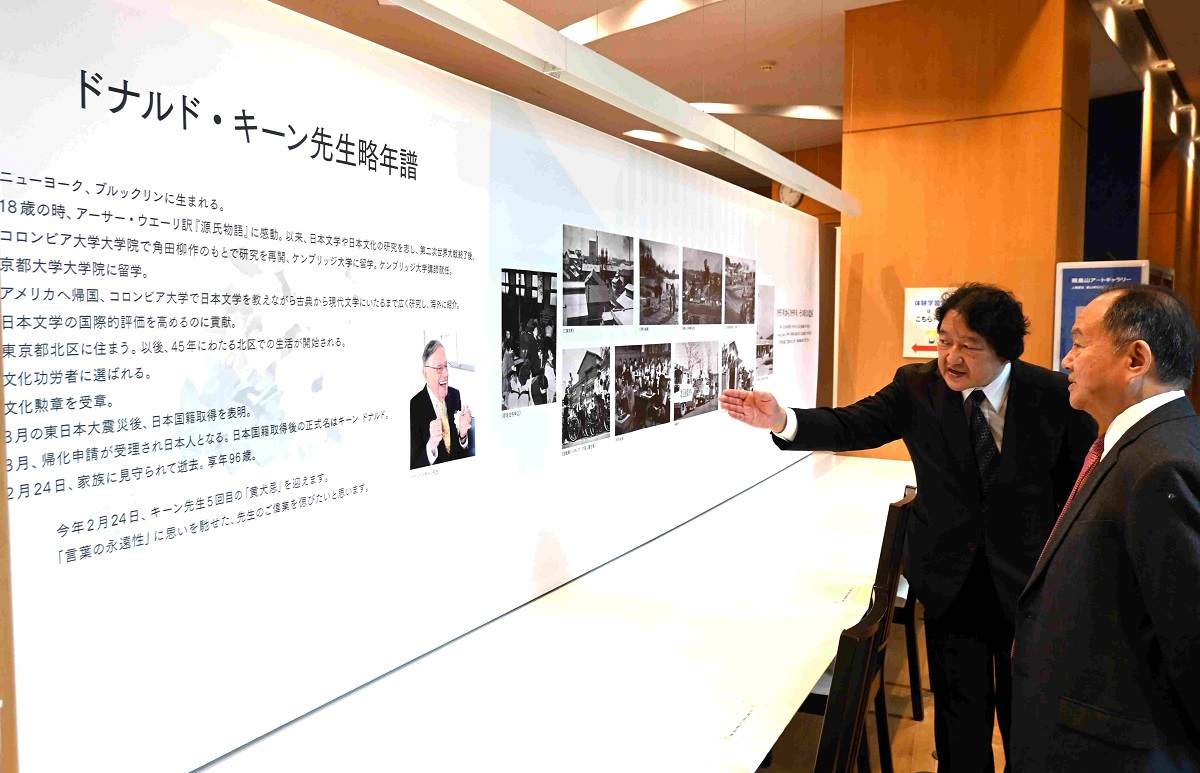
Takasuke Ishikura, left, guides Donald Keene’s adopted son, Seiki Keene, through the exhibit at the Asukayama Museum in Kita Ward, Tokyo, on Feb. 6.
Takasuke Ishikura, a lecturer at Kokugakuin University and an advisor on cultural policy for Kita Ward, who planned the exhibition, said: “After the Great East Japan Earthquake, Keene-san spoke about his feelings toward Japan, saying, ‘If only we have a sense of beauty in our hearts, we can always rebuild even if we lose something tangible.’ I believe these travels were the starting point for those words.”
Admission free. Open from 10 a.m. to 5 p.m. Closed on Mondays. The second half of the exhibition, “Modern Japan in 1958 as Seen by Donald Keene,” will be held from March 12 to April 14.
"JN Specialities" POPULAR ARTICLE
-

The Japan News / Weekly Edition (12/12-12/18)
-

Noodle Dining Shunsai / Rich Oyster Ramen to Savor at Odasaga; Experienced 68-year-old Owner Creates Numerous Ramen Varieties
-

The Japan News / Weekly Edition (12/5-12/11)
-

People Keep Loved Ones’ Ashes Close in Special Jewelry, Small Urns as Unique Way to Memorialize Them
-

The Japan News / Weekly Edition (12/19-12/25)
JN ACCESS RANKING
-

Tokyo Economic Security Forum to Hold Inaugural Meeting Amid Tense Global Environment
-

Keidanren Chairman Yoshinobu Tsutsui Visits Kashiwazaki-Kariwa Nuclear Power Plant; Inspects New Emergency Safety System
-

Imports of Rare Earths from China Facing Delays, May Be Caused by Deterioration of Japan-China Relations
-

University of Tokyo Professor Discusses Japanese Economic Security in Interview Ahead of Forum
-

Japan Pulls out of Vietnam Nuclear Project, Complicating Hanoi’s Power Plans
